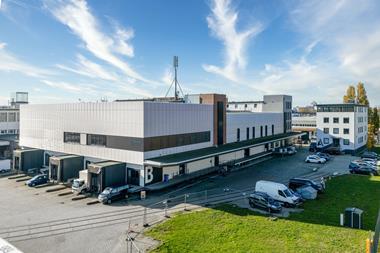GLOBAL - Global house price growth last year was weaker than at any time since the second quarter of 2009 and is unlikely to improve until income and rents catch up and the market absorbs excess supply generated during the boom years, according to Knight Frank's global house price index.
Given a geographic expansion of last quarter's downward trend - values fell in 60% of the markets covered by the index - and a continued Asian slowdown, the index could slip into negative territory in 2012, according to report author Kate Everett Allen, head of international residential research.
"No improvement is expected until the gap between house prices and two of its key determinants - incomes and rents - starts to shrink and the excess supply of new homes built in many locations during the boom years prior to 2008 is absorbed," the report said.
Although Knight Frank has no data on which countries are at greatest risk from the disparity between rent and incomes and house prices, Everett Allen pointed to IMF research published earlier this year suggesting the ratios remained well above historical averages for all but a handful of markets.
The implication is that there may be room for house prices to fall further.
Significant exceptions to the index's overall 0.5% growth trend last year included a 26% increase in Brazilian house prices, which the report attributed to population growth, rising household wealth and a growing mortgage market.
Although Ireland came in with the index's lowest growth at 17%, other European markets bucked an otherwise moribund trend.
Within the euro-zone, Estonia today topped the regional inflation list with 4.4% year-on-year, but posted the index's second-highest growth after Brazil.
Slovenia and Germany likewise posted growth of more than 5% in the index.
Everett Allen attributed the disparity to variations in rates of unemployment, consumer debt and confidence, household wealth, economic growth, housing supply and demand factors.
"The state of bank lending is pivotal," she added.
"In Brazil, the mortgage market is expanding rapidly. In Ireland, strict lending criteria brought in [after] the Lehman collapse have yet to be relaxed."
Irish Banking Federation data indicates that only 14,300 mortgages were agreed in that market last year, compared with around 200,000 in 2006.
In contrast, the Brazilian Association of Mortgage Lenders last year forecast a 51% increase in the number of mortgages to BRL85bn (€36.1bn).
In Asia, the decline in house prices has been dramatic - largely as a result of Chinese government measures aimed at cooling the market.
Growth in Chinese house prices was -2% last year, compared with 42% at their 2007 peak.
Singapore house prices posted 5% last year, compared with 33% in 2007.
However, Knight Frank analysts saw no indication that the government would draw back from property-tightening policies, with the result that market sentiment will remain weak throughout 2012.
"What's interesting is the lack of uniformity amongst the BRICs," said Everett Allen.
Brazil and India recorded annual price growth of 26 and 11%, respectively, last year, while China and Russia saw prices fall by 2.1% and 16.7%, respectively.
"Prices in China are softening due to government regulatory measures, and Russian growth is being hampered by large-scale affordable housing programmes and limited demand outside its key cities," Everett Allen said.
Despite acknowledging that the performance of global housing markets was far from uniform, and that there was "some cause for localised optimism", the report concluded that the overall trend this year would be negative.










![Henderson Park PBSA Edinburgh[100]](https://d15duu1h3gsd2d.cloudfront.net/Pictures/380x253/6/8/9/1338689_hendersonparkpbsaedinburgh100_507986.jpg)

